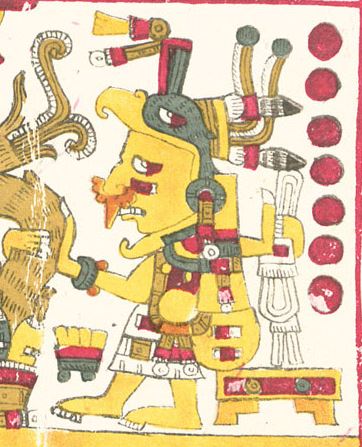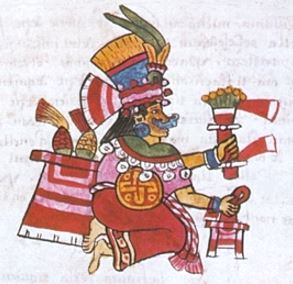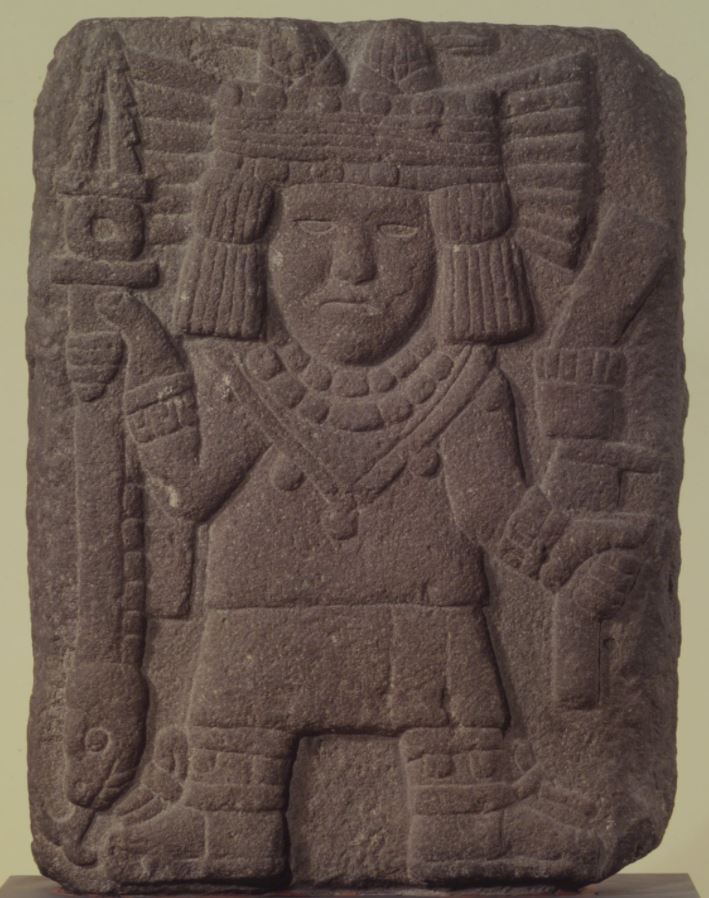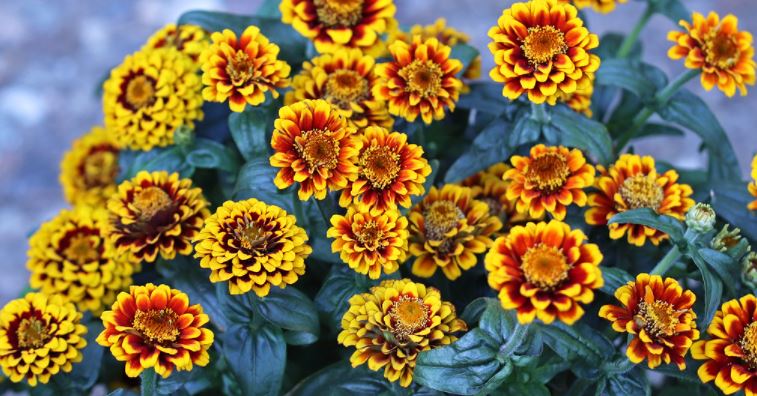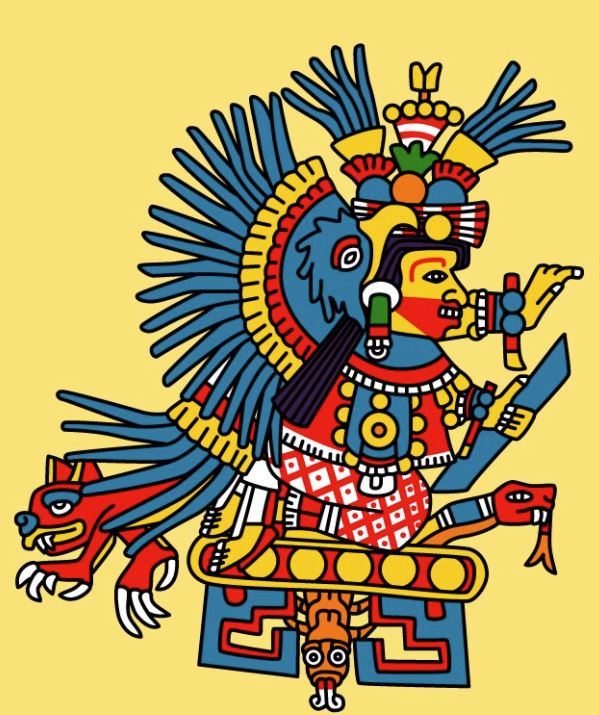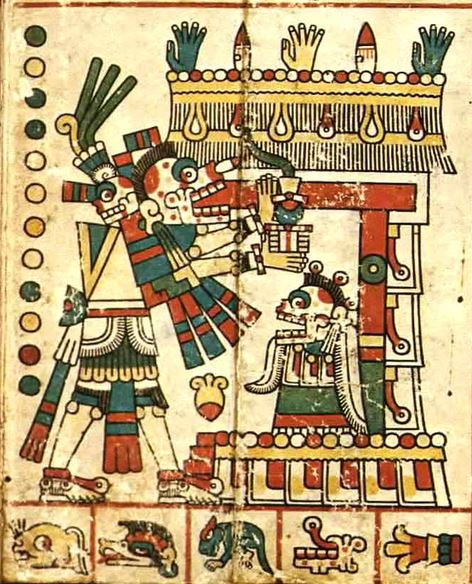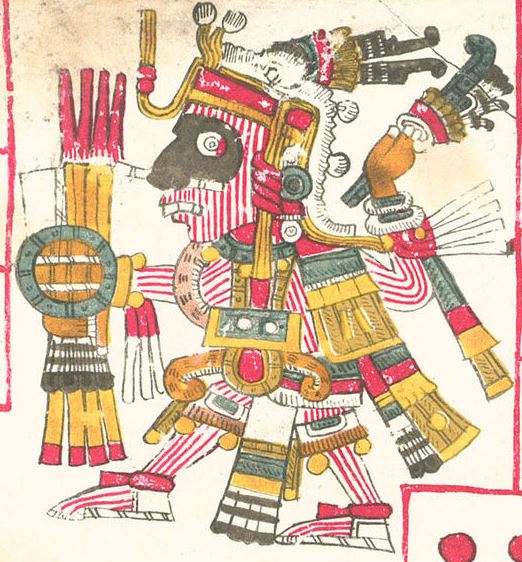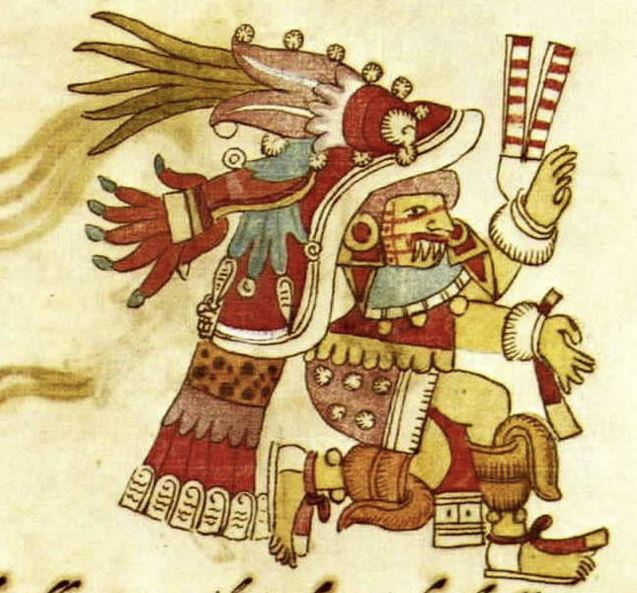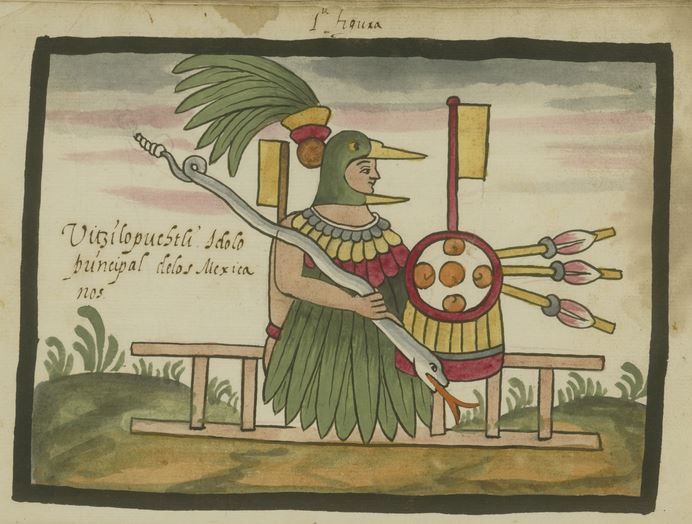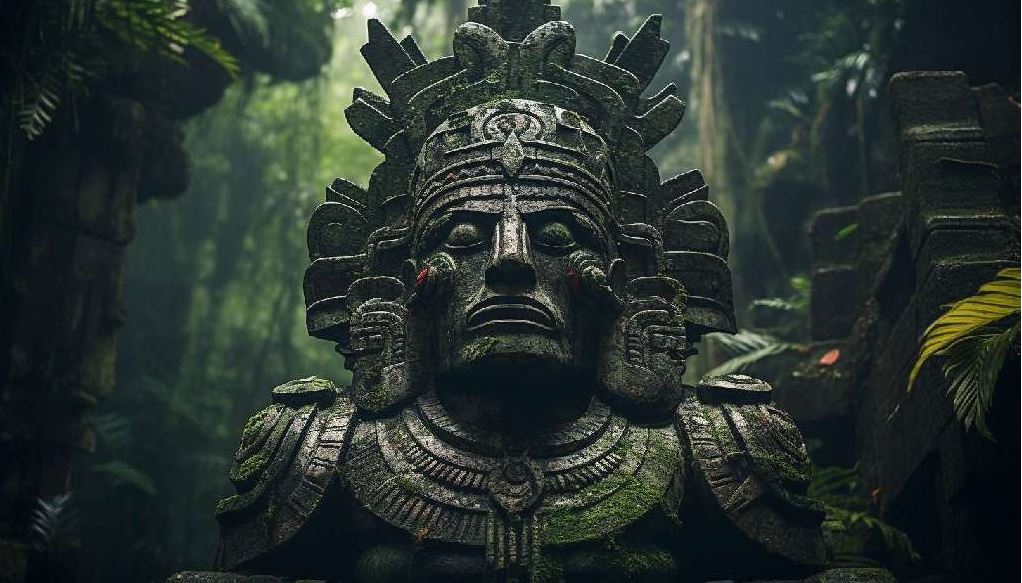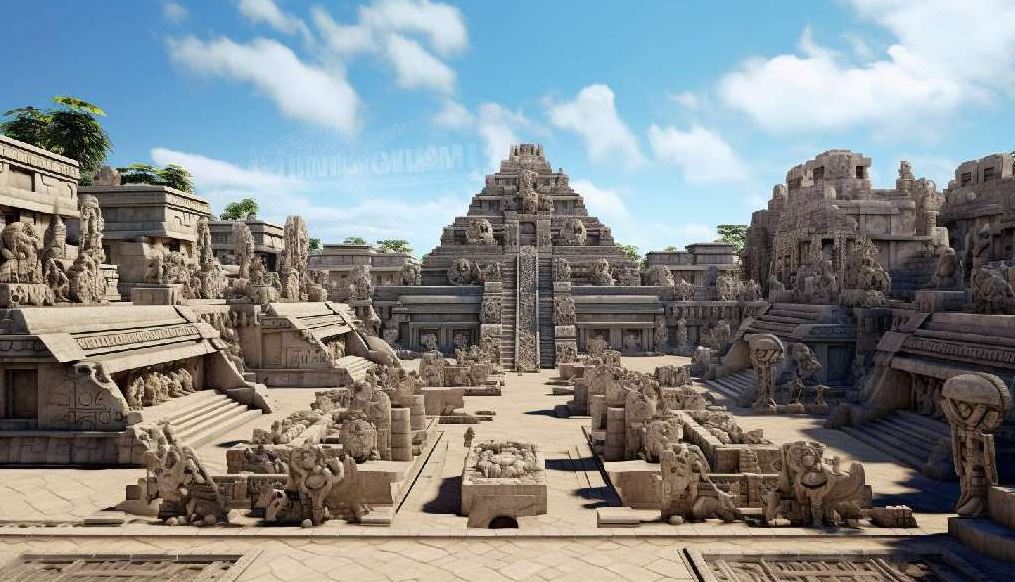The Aztec Corn Goddess Chicomecoatl
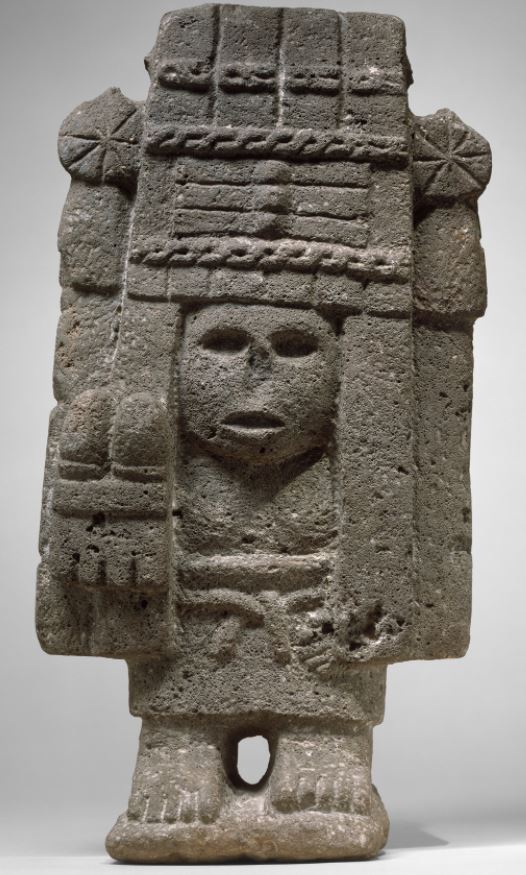
The maize was a crucial element in the food chain of the Aztecs, so it is not a surprise that many Aztec gods and goddesses were dedicated to this particular food.
The Aztec corn goddess Chicomecoatl was one of the Aztec deities of maize. In particular, she was the goddess related to that part of the maize which was preserved in order to be used as seed for the subsequent planting.
The other divinities who presided to maize in the Aztec pantheon were Xilonen, who was the goddess of new maize, and Cinteotl, who was the god of the maize at the peak of its maturation. The latter was often thought to be a male counterpart or even a consort of the Aztec goddess Chicomecoatl.
A representation of the Aztec corn goddess Chicomecoatl
Anyway, some scholars tend to identify Chicomecoatl and Xilonen, considering the word “Xilonen”, which means “young doll made of maize” in Nahuatl, simply as another name to refer to the Aztec corn goddess Chicomecoatl.
Unfortunately, such uncertainties are typical of Mesoamerican studies due to a lack of resources.
The fact that maize had three divinities associated with it is a direct consequence of the importance this cereal had for the Aztecs, and for Mesoamerican people in general: it was in fact the principal element in their diet.
What is Chicomecoatl the goddess of?
Sometimes, the Aztec corn goddess Chicomecoatl’s figure was seen in a wider way, and she was associated with agriculture, drinks, and food in general.
She was often depicted holding a couple of ears of maize in each of her hands. Other characteristics which made her portraits recognizable were the color of her face, which was typically red ochre, and her dress, which often presented floral motives.
In her depiction were often also present some accessories: foam sandals at her feet, a shield having the shape of the sun, and a paper headdress. The latter was maybe her most important attribute: it was very tall (sometimes it was taller than the figure of the goddess herself) and reproductions of it were crafted as offerings to honor the Aztec corn goddess Chicomecoatl.
A picture of Chicomecoatl
Also, they were given to the girls chosen to impersonate Chicomecoatl during the festivities dedicated to her, a fact which testifies the importance of this element for her iconography.
Aztec goddess Chicomecoatl: Origin of the Name
The name “Chicomecoatl” means “seven snakes” in Nahuatl. There are different interpretations for the meaning of such a name.
Some think that the number seven appearing in it is a sign of prosperity, in relation to her power to propitiate crop growth.
Others believe that the reference to snakes might symbolize a more sinister aspect of the deity, representing her ability to cause disgrace besides good fortune.
History of the Aztec corn goddess Chicomecoatl and Most Important Myths Related to Her
Few stories and pieces of information have survived about the Aztec goddess Chicomecoatl. It seems that she, together with many other goddesses, was one of the spouses of Tezcatlipoca, the obscure god of the night sky, and one of the most important deities of the Aztec pantheon.
This association is not so surprising after all, considering some tales on her account which shed shadows on her figure. Let’s see one of these stories in more detail.
Aztec goddess Chicomecoatl’s Deadly Embrace
Like most Aztec goddesses, Chicomecoatl was usually depicted as a mature woman.
Youngness was in fact typically reserved to Xochiquetzal, the goddess of eroticism and love. Anyway, some portraits exist representing the Aztec goddess Chicomecoatl as a young lady.
It is reported that, when she appeared in this form, her presence could be ominous: in fact, an embrace by the young Chicomecoatl would have meant sure and prompt death.
A statue of Chicomecoatl
Powers of the Aztec goddess Chicomecoatl
As the goddess of the seed maize, Chicomecoatl was obviously thought to possess the power to grant a good crop for the upcoming year. Of course, for this purpose, she needed to be propitiated.
Symbols of the Aztec corn goddess Chicomecoatl and Their Meanings
Let’s see in detail the meaning of Chicomecoatl’s symbols described in the introduction.
Chicomecoatl symbol: Flowers and Plants
As we said, the Aztec corn goddess, Chicomecoatl was often represented wearing a dress with flowers and plants portrayed on it. These were surely symbols of her power to make crops grow, in quality of goddess of agriculture.
The flowers and plants, the main symbol of Chicomecoatl
Chicomecoatl symbol: The Sun Shield
In some depictions, the Aztec corn goddess Chicomecoatl held a shield having the shape of the sun. Unfortunately, a clear explanation of the meaning of such an object cannot be given.
It is probable that it was related to Chicomecoatl’s role of goddess of the crops. The sun is in fact an essential factor for crop growing.
Anyway, at the same time, it can cause damage if excessive and unmitigated. A shield having the form of the sun might represent a balance between these two opposite aspects of the sun.
More Chicomecoatl Aztec goddess Facts
Being agriculture an activity of extreme importance for all peoples and cultures, Chicomecoatl was widely worshipped, and many celebrations were directed to her.
As common with Aztecs, they often required human sacrifices in order to propitiate the goddess and grant survival for the community through agriculture. This happened, for example, on the day of the autumnal equinox, when a girl was chosen to personify Chicomecoatl.
When the celebration was over, the impersonating girl was decapitated and her blood poured over a statuette of the goddess. Anyway, it seems that the main festivity dedicated to Chicomecoatl, together with other gods, was the so-called Huei Tozoztli, which significantly was held in the harvest season.
A statue representing the Aztec corn goddess Chicomecoatl
During this festivity, worshippers would have performed blood-letting sacrifices in order to propitiate the harvest, and again, a complete human sacrifice of a girl would have been needed.
According to some sources, on this occasion, the sacrificial victim would have also been flayed, and her skin used to craft masks for the priests of Chicomecoatl’s male counterpart, the god Centeotl.
This rite probably had some symbolic meaning, though its significance is not completely clear today. It is known that human sacrifices among the Aztecs were sometimes accompanied by ritual cannibalism, and Chicomecoatl seems to have been one of the deities receiving this sort of ritual attention.
Archeological remains confirm that Aztecs believed that some of their deities would have been more efficiently propitiated by children, rather than adults. While child sacrifices would have been typical of watery gods like Tlaloc, it seems that they would have been performed to propitiate agriculture as well, so that children might have been offered to the Aztec corn goddess Chicomecoatl, too.

